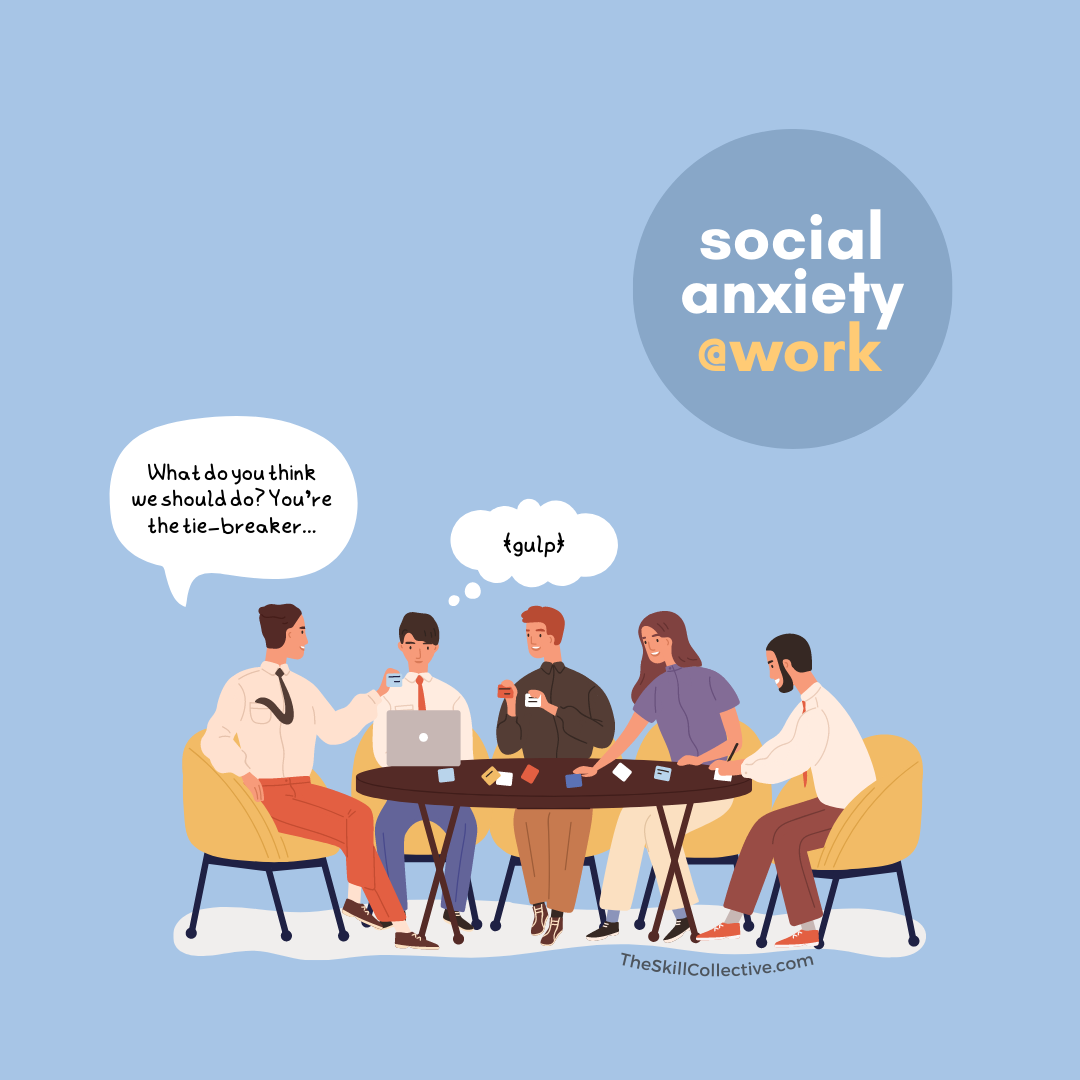WHAT IS public speaking ANXIETY?
Public speaking anxiety is a form of performance anxiety, and both come under the umbrella of Social Anxiety Disorder. This relates to a fear of negative evaluation when faced with the prospect of speaking in public. Features of public speaking anxiety include[1]:
The anxiety occurs specifically in a situation where the person is speaking in front of a group, and such situations almost always trigger anxiety.
The anxiety is out of proportion to the actual threat posed by the situation.
There is a fear of negative evaluation.
The situations are avoided, or endured with distress.
The fear, anxiety, or avoidance, causes significant distress or impairment in functioning.
In some instances panic attacks may co-occur with public speaking anxiety.
THE IMPACT OF PUBLIC SPEAKING ANXIETY
Nerves about public speaking affects 25% of individuals [2], and it’s common to see individuals avoid being in the public eye. However, there are times when a fear of public speaking can have significant negative outcomes for you personally and professionally. These may include:
Avoiding giving a speech at your best friend’s milestone birthday party because you’re so nervous that you stumble on your words.
Worrying about getting married as it means being the centre of attention with ‘all eyes on you’.
Not putting your hand up for a promotion because that role - that you’re more than capable of doing - involves chairing meetings or giving presentations to clients.
Not contributing in class, even if a component of your marks depend on them, because you don’t want to look like a fool by saying the wrong thing.
Going significantly overtime with a conference presentation so there’s no opportunity for questions that may ‘throw’ you.
And accompanying these are significant fears of blushing, stammering, and worrying that your anxiety will ‘leak out’ and will be visible to the audience.
Public speaking anxiety can affect anyone. It can affect students who have to give speeches, it can affect lawyers who have to attend court, it can affect athletes who have to give speeches, and it can affect academics who give lectures. The impact on quality of life can be a significant one, yet there are highly effective treatments for helping with public speaking anxiety.
PUBLIC SPEAKING ANXIETY SYMPTOMS
As with any type of anxiety, there are a typical categories of symptoms to look out for - cognitive, behavioural, and physical. Here’s how they may look in public speaking anxiety:
COGNITIVE SYMPTOMS OF PUBLIC SPEAKING ANXIETY
As with social and performance anxiety, at the core of public speaking anxiety is a fear of being judged negatively. This could relate to judgements of your performance, or even that your anxiety might be ‘on show’ for everyone to see. You might then start to scan the room and people’s faces for signs that you’re being judged negatively, which serves to increase your anxiety.
Unhelpful thinking styles and unhelpful interpretations can also come into play, leading you to focus on how ‘awful’ the situation is (dialling up your anxiety), and blow any small errors out of proportion. You might also start to tune into the physical sensations in your body, and worry that others will notice this and judge you harshly for it.
Unfortunately, when anxiety becomes too extreme, and you’re hyperfocused on how to escape the public speaking situation, it can be hard to remember what you’re talking about. This, in turn, exacerbates the anxiety.
PHYSICAL SYMPTOMS OF PUBLIC SPEAKING ANXIETY
When we feel anxious our body goes through a series of physical changes designed to keep us safe - be it through fighting, running away, or freezing. It’s common in situations of performance anxiety to experience symptoms such as butterflies in the stomach, nausea, racing heart, tightness in your chest, and sweating. Some of these symptoms can indeed be very distressing (and even lead to panic attacks).
BEHAVIOURAL SYMPTOMS OF PUBLIC SPEAKING ANXIETY
Avoidance is a core feature of anxiety, and when it comes to public speaking anxiety the avoidance may be overt (e.g. opting out altogether), or it may take on subtler forms (e.g. wearing certain items of clothing to hide signs of sweating, relying heavily on visual aids including videos so as to take the focus off you, or simply just keeping your eyes on the page rather than looking at the audience. There may also be the use of medication and alcohol to take the edge of the physical symptoms of anxiety.
TREATMENT FOR PUBLIC SPEAkING ANXIETY
When it comes to treatment options for public speaking anxiety, consider the following:
COGNITIVE BEHAVIOUR THERAPY (CBT). Cognitive Behaviour Therapy is a highly effective treatment for performance anxiety. It teaches you how to re-appraise self-talk that heightens your anxiety, and teaches you how to manage your anxiety with time and practice. Exposure therapy is used as part of CBT to increase distress tolerance.
SKILLS TRAINING where you focus on things such as developing a confident voice, how to shape your content to help you convey your message, and even how to handle tricky queries come question time.
ACCEPTANCE AND COMMITMENT THERAPY (ACT). A variation of CBT (part of the ‘new wave’ of CBT treatments), ACT teaches acceptance, mindfulness, and detaching from thoughts and discomfort that are part of anxiety. Exposure therapy is also used as part of ACT to decrease experiential avoidance. Together these help an individual move towards living a values-based life.
If you’re ready to work on Public Speaking Anxiety, why not Contact Us? We can help you develop a tailored plan to help work on your thoughts, public speaking skills, and help you gradually face public speaking one step at a time, through our short course Speaking Volumes. Below are our psychologists who are trained in working with you using Speaking Volumes.
REFERENCES
[1] American Psychiatric Association (2013). Diagnostic and statistical manual of mental disorders (5th ed.). Washington: American Psychiatric Publishing.
[2] Furmark, T., Tillfors, M., Everz, P., Marteinsdottir, I., Gefvert, O., & Fredrikson, M. (1999). Social phobia in the general population: Prevalence and sociodemographic profile. Social Psychiatry and Psychiatric Epidemiology, 34, 416-424.











Living with social anxiety as a student can be challenging - speaking up in class, group assignments, public speaking, gaining work experience, making friends … the list of social situations is endless. But there’s no need to suffer further…read on to find how to go from surviving to thriving in your studies.